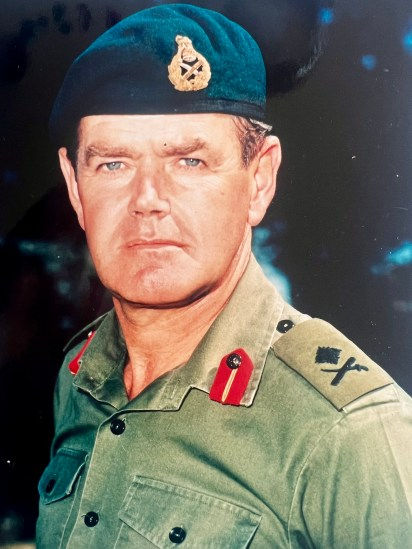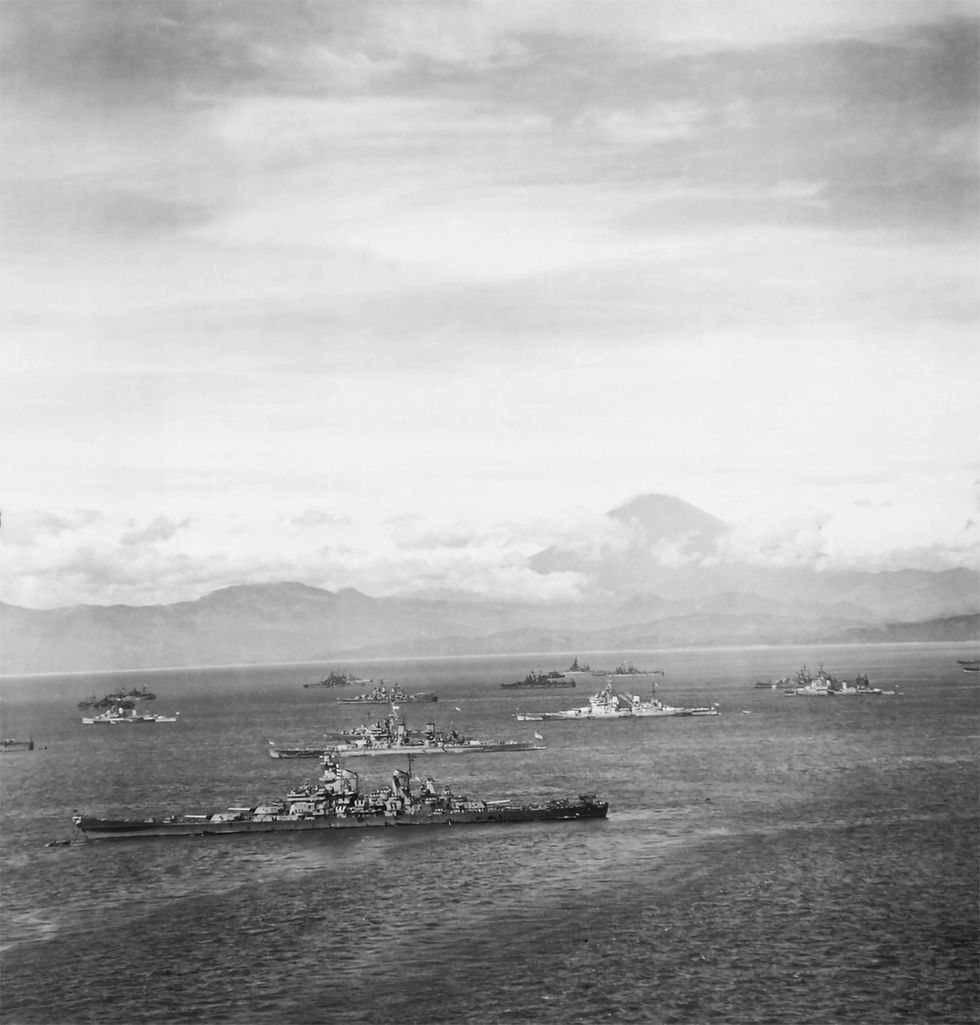Anthony 'Tony' Smith awarded the George Cross
- Si Biggs

- Feb 24, 2021
- 5 min read
Updated: Oct 16, 2023
On the night of the 23rd February 1944 former Royal Marine Tony Smith earnt the George Cross in a daring rescue.

Anthony Smith (1894-1964) was born in Christchurch, Hampshire on 3rd August 1894, one of six children for Anthony and Emma Cordelia Smith. The family grew up at 8 Bury Street, Chelsea, and Anthony Senior was a ship’s stoker, and Emma was a charwoman. Anthony Junior left school aged 14 and began an apprenticeship with his father, who was now a chimney sweep.
When war broke out in 1914, Smith enlisted in the Royal Marines Light Infantry (RMLI), Chatham Division. He was posted to the Royal Marine Brigade of the Royal Naval Division and participated in the landing at ANZAC cove in April 1915, during the Gallipoli Campaign.
Smith sustained an injury to his foot requiring evacuation to Chatham. By December, Smith rejoined his old battalion in France where he fought in numerous actions including the Somme offensive of 1916. Smith's service in the Great War came to an end after a serious hand injury requiring amputation of three fingers resulted in him being invalided out of the Corps on the 17th February 1917.
At the outbreak of WWII, Tony became a member of the Heavy Rescue Section of the Civil Defence Rescue Service at Chelsea. On the night of February 23rd /24th 1944 bombs intended for the Lots Road Power Station fell on nearby streets.
The hardest hit was Edith Grove, where a whole terrace of houses was demolished, the water main ruptured and the gas main set alight. It was for his actions during this raid that Tony was awarded the George Cross (GC).
After being demobilised, he became a nightwatchman at the Holborn Viaduct Hotel, but soon gave it up and returned to his pre-war occupation of shoemaker. In 1926, he rejoined the family business of chimney sweeps. He became a familiar figure around Kensington and Chelsea on his bicycle. On the outbreak of World War II, he tried to enlist again in the Royal Marines, but he couldn’t serve due to his injuries to his right hand. He then decided to join the Heavy Rescue Service, and his squad consisted of 11 men, later reduced to 7.
The peak of the “Little Blitz” on London occurred between 18th and 25th February 1944 with the National Fire Service dealing with up to 650 fires per night.

On the night of 23rd February, two days of the GC action of Leslie Fox, during an air raid, bombs demolished a number of houses at the World's End, Chelsea. Only the party wall was still standing, but in a precarious condition. The gas and water mains were fractured and the gas ignited, turning the wreckage into a raging inferno.
Smith burrowed his way through the rubble and managed to reach Sam Mitchell, who was trapped in the basement, but by the time he had freed him the front of the building was a wall of fire, the upper floors were collapsing and his escape was cut off. Smith determinedly burrowed his way through the burning debris and brought the man out safely, just as the remaining wall fell into the basement.
Smith's eyebrows and hair were burnt and he was almost overcome by smoke but, undeterred, he immediately went to the assistance of Albert Littlejohn, who was trying to rescue a woman trapped in the basement of an adjoining building, the walls of which were in a very dangerous condition. Smith worked for up to an hour in waist deep water, and with the walls and floors on the point of collapse, helping to release her. Littlejohn was awarded the BEM.
Smith was awarded the George Cross on 30th May 1944 and he received the medal from King George VI at Buckingham Palace on 10th October 1944 and and made a Freeman of the Borough of Chelsea in June of the same year. Alongside him at the investiture was another GC in Benjamin Gimbert and a VC in William Sidney.
Smith would never wear his GC and was quoted in 1957 as saying “It was just a job, see. You get in there and do it, same as the other blokes.”
“The KING has been graciously pleased to award the GEORGE CROSS to:- Anthony Smith, Member, Civil Defence Rescue Service, Chelsea.
The London Gazette citation dated 30 May 1944;
On 25th February 1944 a stick of bombs fell on the ‘World’s End’ area of Chelsea destroying a four storey building. Only the shell was left standing and gas and water mains had been fractured with the gas ignited and causing rubble and neighbouring buildings to catch fire. Two floors of the building had pan caked.
Smith went into the rubble and started to tunnel reaching a casualty trapped in the front basement. Having released the victim from the debris the buildings condition had become even more precarious with the front of the building now a solid sheet of flame added with the building still crumbling around him his escape route was now blocked.
Smith carried the casualty to the rear through the smoke and fire of the building where he found a small hole to freedom. Smith again frantically burrowed away to make a whole big enough to escape the inferno. After passing the casualty through the hole, one of the main walls of the building collapsed. Smith escaped but most of his hair and eyebrows had been burned from his head.
Almost overcome by the fumes and smoke Smith went to the next building to help a colleague who was attempting to rescue a woman who was trapped in that building’s basement. The building was in a similar condition to the first one Smith had entered and he worked for up to an hour in waist deep water to help effect the rescue of the women. Smith carried on working with the rest of his crew throughout the rest of his shift until they were relieved sometime later.
Smith remained a bachelor and returned to being a chimney sweep after the war. He lived in rented accommodation and would eat all of his meals with his sister who lived nearby. He didn’t believe in electricity and only had gas lights. He died at St Luke’s Hospital in Chelsea on 20th October 1964, aged 70, and was buried in an unmarked grave three days in North Sheen Cemetery, Richmond.
In the spring of 1998, his grave was discovered by Doris Miller, who alerted the Royal Marines Museum a new stone was dedicated on 22nd May 1999 by arrangement of the Royal Marines Association (RMA) and supported by The George Cross and Victoria Cross Association, the Military, Royal Marines Historical Society (RMHS) and representatives from the Royal Borough of Kensington and Chelsea. He is buried in North Sheen Cemetery in Richmond.

Smith’s medals came up for auction in 1988 but were unsold. They were sold again in 2005 to a private buyer, they are now owned by the Ashcroft Collection and displayed in the Ashcroft Gallery, Imperial War Museum.
Smith's medals:
George Cross
1914-15 Star
British War Medal 1914-18 (CH.18816 A.Smith. Pte. R.M.)
Victory Medal (CH.18816 A.Smith. Pte. R.M.)
Defence Medal
Coronation Medal 1953
A plaque commemorating Smith's bravery on 23 February 1944 is located on Dovehouse Green, on the King's Road in Chelsea near the Chelsea Old Town Hall.






Comments